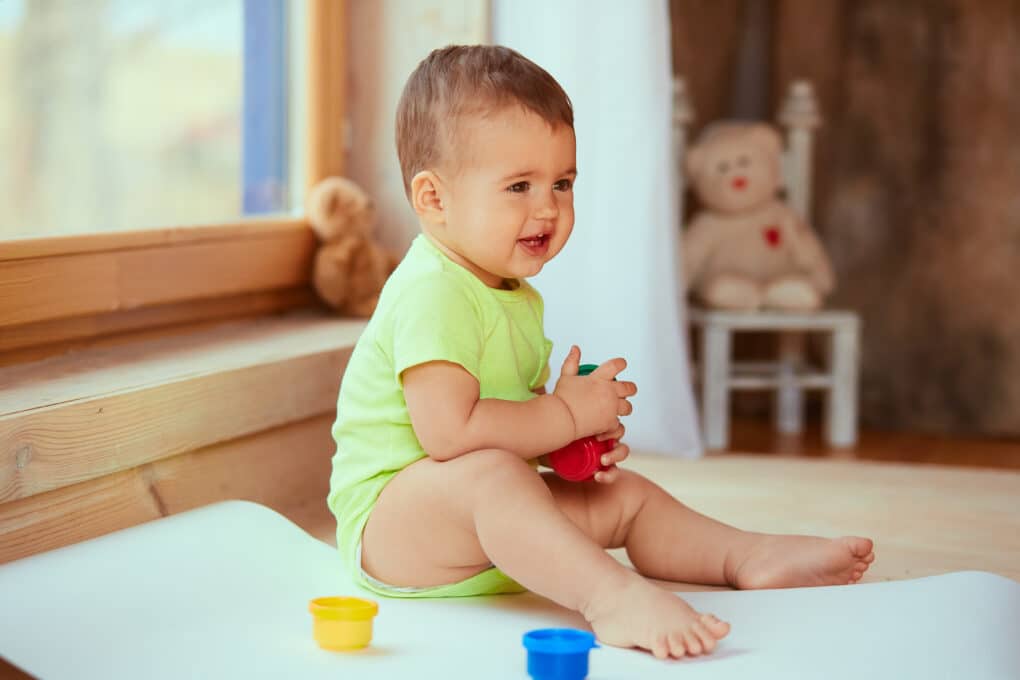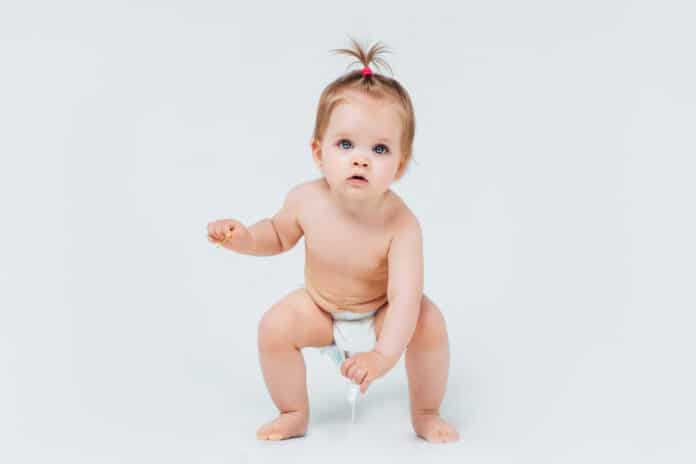Potty training is an essential milestone for toddlers, but it can also be a challenging and frustrating process for parents. However, with the right approach and techniques, you can successfully potty train your child and make it a positive and rewarding experience for both of you.

In this article, we’ll discuss the signs of readiness for potty training, the different methods available, and effective tips and strategies for success.
Importance of Potty Training for Toddlers
Potty training is a critical milestone in a toddler’s development. It helps them transition from using diapers to using the bathroom independently, promoting a sense of independence and self-confidence.
It’s essential for hygiene and cleanliness, reducing the risk of infections and other health concerns.
Recognizing the signs of readiness is crucial to the success of potty training. Your child must be physically, emotionally, and cognitively ready to understand and take part in the process.
Signs Your Childis Ready for Potty Training
Here are some signs that your child is ready for potty training:
- Ability to communicate: Your child should be able to communicate when they need to use the bathroom and understand basic language related to potty training, such as “pee-pee” or “poo-poo.”
- Interest in using the potty: Your child may show an interest in using the toilet or potty chair, watching you or siblings use the bathroom, or imitating bathroom behaviors.
- Ability to control bowel and bladder movements: Your child should be able to hold their urine and stool for a short time, indicating that they have control over their bladder and bowel movements.
- Signs of discomfort: Your child may show signs of discomfort or indicate when their diaper is wet or soiled, demonstrating awareness of their bodily functions.
It’s also important to consider your child’s unique needs and personality when determining their readiness for potty training. Some children may be ready earlier or later than others, so don’t feel pressured to start potty training before your child is ready.
READ ALSO:
Preparing for Potty Training
Once you’ve determined that your child is ready for potty training, it’s time to prepare. This includes choosing the right potty training method, gathering necessary supplies, and creating a potty training routine.
Preparing effectively for potty training can make the process smoother and more successful. Here are some essential steps to take before beginning the process:
- Choosing the Right Equipment: Invest in a potty chair or seat that is comfortable and easy for your child to use. Let them get used to sitting on the potty chair fully clothed to familiarize themselves with the sensation.
- Purchasing the Right Clothing: Choose clothing that is easy to remove, such as elastic waistbands or snap closures, to promote independence and make it easier for your child to use the bathroom.
- Timing: Choose a time to begin potty training that is conducive to your child’s and your schedule, such as a time when you are both relaxed and able to dedicate time to the process.
- Consistency: Create a routine and schedule for potty breaks, promoting consistency and predictability for your child.
Choosing the Right Potty Training Method
There are several potty training methods available, including the gradual approach, the intensive approach, and the child-led approach. Each method has its advantages and disadvantages, so it’s essential to choose the one that works best for your child’s needs.
The Gradual Approach
This method involves gradually introducing your child to the concept of using the potty. It starts with sitting your child on the potty fully clothed, then gradually removing their clothes, and finally encouraging them to use the potty on their own.
This method is suitable for children who are more cautious and take longer to adjust to new routines.
The Intensive Approach
This method involves dedicating a few days to potty training and using a reward system to encourage your child’s progress. It’s a more intense approach but can be effective for children who respond well to structure and clear expectations.
The Child-Led Approach
This method involves letting your child take the lead in potty training, following their cues and allowing them to learn at their own pace. This method is suitable for children who are more independent and self-motivated.
Gathering Necessary Supplies
Gathering necessary supplies, such as a potty chair, underwear, and cleaning supplies, can also help make the potty training process smoother.
It’s important to choose a potty chair that is comfortable for your child and easy to clean. Underwear that is easy to pull up and down can also make the process easier for your child.
Gathering the supplies for potty training is an essential step in preparing for the process. These supplies will help you create a comfortable and supportive environment for your child, promoting their success and independence.
Basic Potty Training Supplies
Here are some essential supplies for potty training and their roles:
- Potty Chair or Seat – A potty chair or seat is the primary equipment for potty training. It is essential to choose a chair or seat that is comfortable and easy for your child to use. Letting your child sit on the chair or seat fully clothed can help them get familiar with the sensation and build their confidence.
- Underwear – Once your child shows progress in potty training, they can transition from diapers to underwear. Choosing comfortable and easy-to-remove underwear, such as elastic waistbands or snap closures, can promote independence and make it easier for your child to use the bathroom.
- Flushable Wipes – Flushable wipes can help your child clean themselves more thoroughly and promote good hygiene habits. Be sure to choose flushable wipes that are safe for your plumbing system.
- Step Stool – A step stool can help your child reach the toilet or sink more easily, promoting independence and reducing the risk of accidents.
- Potty Training Books and Videos – Reading potty training books or watching videos can help your child understand the process and feel more comfortable with the concept of using the potty.
- Rewards – Rewards can help motivate and encourage your child throughout the potty training process. Stickers, small treats, or extra playtime can be effective rewards for successful efforts or progress.
- Cleaning Supplies – Accidents are inevitable during potty training, so it’s essential to have cleaning supplies on hand, such as paper towels, disinfectant spray, or a carpet cleaner, to clean up messes promptly and efficiently.
- Training Pants – Training pants are an alternative to regular underwear and can be helpful for accidents or overnight use. They are more absorbent than regular underwear but less bulky than diapers, promoting a sense of independence and confidence.
Overall, gathering the supplies for potty training can help you create a supportive and comfortable environment for your child, promoting their independence and success.
Creating a Routine and Schedule
Creating a routine and schedule for potty breaks can also promote consistency and predictability for your child. It’s essential to start by taking your child to the bathroom at regular intervals, such as every hour, and gradually increasing the time between breaks as your child becomes more comfortable and confident.
Beginning Potty Training
The next step in potty training is introducing the concept of using the potty to your child. This involves teaching them how to sit on the potty, recognizing when they need to go, and learning proper hygiene habits.
- Introducing the Potty Chair: Start by introducing your child to the potty chair and allowing them to sit on it fully clothed to get used to the feeling. Encourage them to try sitting on the potty chair at regular intervals throughout the day.
- Recognizing the Need to Go: Teach your child to recognize the feeling of a full bladder or bowel by using language that is easy for them to understand, such as “pee-pee” or “poo-poo.” Encourage them to tell you when they need to use the bathroom and praise them for communicating with you.
- Proper Hygiene Habits: Teach your child proper hygiene habits, such as wiping themselves correctly, washing their hands after using the bathroom, and flushing the toilet.
Positive Potty Training Tips
Potty training can be a challenging process, but with these effective tips and strategies, you can make it smoother and more successful:
- Use Positive Reinforcement: Praise and reward your child for their efforts and progress, such as using the potty successfully or telling you when they need to go. This can include stickers, small treats, or extra playtime.
- Be Patient: Potty training takes time, and setbacks are normal. Be patient and supportive of your child throughout the process.
- Consistency is Key: Stick to a routine and schedule for potty breaks to promote consistency and predictability for your child.
- Be Prepared for Accidents: Accidents are inevitable during potty training. Have cleaning supplies on hand and remain calm and supportive when accidents occur.
- Encourage Independence: Encourage your child to do things on their own, such as pulling down their pants or wiping themselves, promoting a sense of independence and self-confidence.
Potty training is a significant milestone in a child’s development that requires patience, consistency, and a positive attitude. As parents, we play a crucial role in helping our children navigate this new experience and making it a positive and successful one.
From setting up a routine to praising our children for their efforts, there are many effective strategies to make the potty training process smoother and easier for both parents and children.
If you’re currently potty training your child or planning to start soon, remember that every child is unique and that there’s no one-size-fits-all approach. Be patient, flexible, and supportive, and don’t forget to celebrate every small success along the way.
Last, if you found this blog post helpful, please share it with other parents who might benefit from this information. And, if you have questions or tips on potty training, feel free to leave them in the comments below. Together, we can make potty training a successful and stress-free experience for everyone involved.





